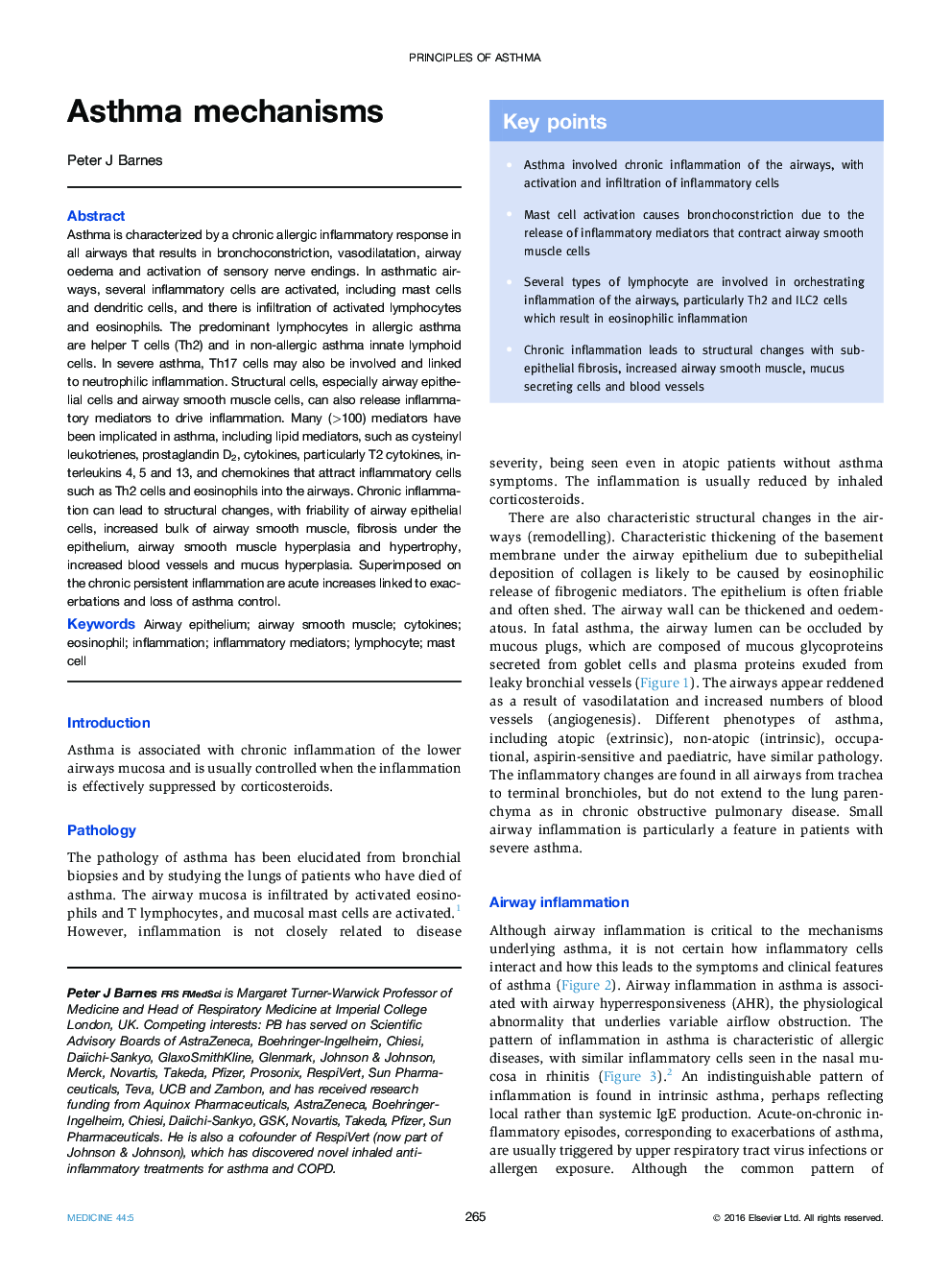| کد مقاله | کد نشریه | سال انتشار | مقاله انگلیسی | نسخه تمام متن |
|---|---|---|---|---|
| 3803610 | 1244933 | 2016 | 6 صفحه PDF | دانلود رایگان |
Asthma is characterized by a chronic allergic inflammatory response in all airways that results in bronchoconstriction, vasodilatation, airway oedema and activation of sensory nerve endings. In asthmatic airways, several inflammatory cells are activated, including mast cells and dendritic cells, and there is infiltration of activated lymphocytes and eosinophils. The predominant lymphocytes in allergic asthma are helper T cells (Th2) and in non-allergic asthma innate lymphoid cells. In severe asthma, Th17 cells may also be involved and linked to neutrophilic inflammation. Structural cells, especially airway epithelial cells and airway smooth muscle cells, can also release inflammatory mediators to drive inflammation. Many (>100) mediators have been implicated in asthma, including lipid mediators, such as cysteinyl leukotrienes, prostaglandin D2, cytokines, particularly T2 cytokines, interleukins 4, 5 and 13, and chemokines that attract inflammatory cells such as Th2 cells and eosinophils into the airways. Chronic inflammation can lead to structural changes, with friability of airway epithelial cells, increased bulk of airway smooth muscle, fibrosis under the epithelium, airway smooth muscle hyperplasia and hypertrophy, increased blood vessels and mucus hyperplasia. Superimposed on the chronic persistent inflammation are acute increases linked to exacerbations and loss of asthma control.
Journal: Medicine - Volume 44, Issue 5, May 2016, Pages 265–270
